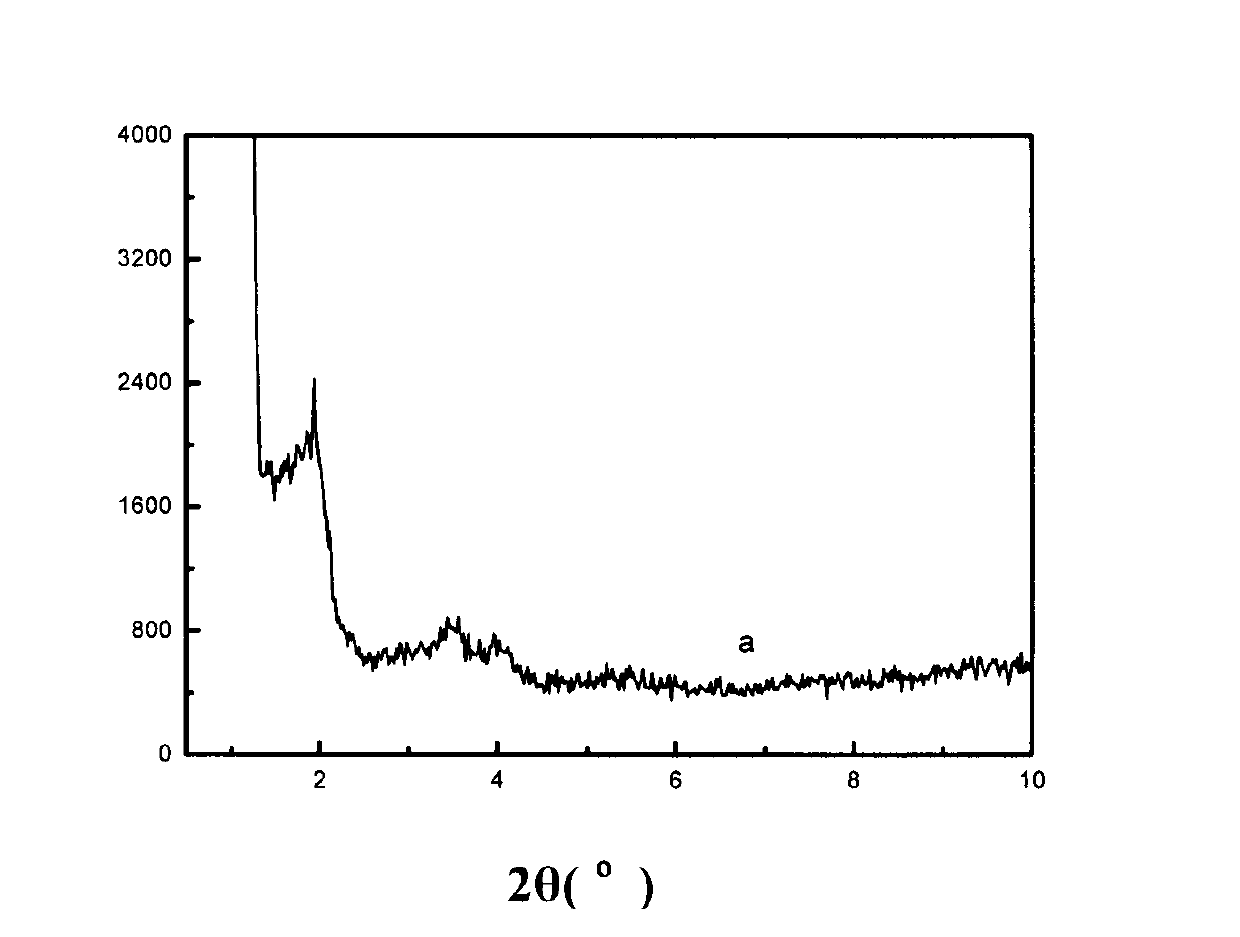Alkene polymerization method
An olefin polymerization and olefin technology, applied in the field of olefin polymerization, can solve the problems of high cost, low mechanical strength and low efficiency of mesoporous materials, and achieve the effects of good mechanical strength, stable structure and high catalytic activity
- Summary
- Abstract
- Description
- Claims
- Application Information
AI Technical Summary
Problems solved by technology
Method used
Image
Examples
Embodiment approach
[0069] According to one embodiment of the present invention, the preparation method of described supported metallocene catalyst comprises the following steps:
[0070] In the first step, polyethylene glycol octyl phenyl ether (triton X-100) and cetyltrimethylammonium bromide (CTAB) are added to aqueous hydrochloric acid, and the molar charge ratio is
[0071] Sodium silicate: polyethylene glycol octylphenyl ether (Triton X-100): cetyltrimethylammonium bromide (CTAB): hydrogen chloride: water = 1: 0.01-0.5: 0.1-0.6: 5-50:100-500, preferably 1:0.01-0.3:0.1-0.4:5-20:100-300, particularly preferably 1:0.03:0.11:7.97:111,
[0072] Stir at 25-60°C until dissolved;
[0073] Step 2, add sodium silicate to the solution obtained in the previous step and stir at 25-60°C for 10-40 minutes until dissolved;
[0074] Step 3: crystallize the product obtained in the previous step for 10-40 hours at a temperature of 25-60°C, filter, wash, and dry the crystallized product to obtain a spherical...
preparation example 1
[0085] This preparation example is used to illustrate the supported metallocene catalyst and its preparation method according to the present invention.
[0086] 1.5 grams of cetyltrimethylammonium bromide (CTAB) and 1.5 ml of polyethylene glycol octylphenyl ether (Triton X-100) with a density of 1.07 g / ml and a concentration of 5% by weight were added In the hydrochloric acid solution that is the concentrated hydrochloric acid of 37% by weight and 75 grams of water by 29.6 gram concentration, stir until CTAB and Triton X-100 dissolve completely at 40 ℃; The solution was stirred at 40°C for 15 minutes, the sodium silicate was completely dissolved, and then crystallized at 40°C for 24 hours. After filtering, washing and drying, the original powder mesoporous material was obtained; the original powder mesoporous material was placed in a muffle furnace for 600 ℃ for 24 hours to remove the template agent and obtain a spherical mesoporous silica material (named JKQ).
[0087] The a...
Embodiment 1
[0100] This example is used to illustrate the catalytic activity of the supported metallocene catalyst according to the present invention.
[0101] In a 2-liter stainless steel autoclave, replace three times each with nitrogen and ethylene, then add 200 ml of hexane, raise the temperature of the kettle to 80 ° C, then add 800 ml of hexane, and add 2 ml of hexane with the addition of hexane The concentration is 1 mole / liter of triethylaluminum (TEA) hexane solution, then add 49.9 mg of JKQ-BU, feed ethylene to raise the pressure to 1.0 MPa and maintain it at 1.0 MPa, and react at 70°C for 1 hour. Obtain 91 grams of polyethylene particle powder, the bulk density (BD) of this polyethylene particle powder is 0.304g / ml, melt index MI 2.16 = 0.005 g / 10 min. It was determined by calculation that the efficiency of the catalyst was 1824g PE / gcat h (ie, 4.2×10 7 g PE / (mol Zr h)).
PUM
| Property | Measurement | Unit |
|---|---|---|
| diameter | aaaaa | aaaaa |
| pore size | aaaaa | aaaaa |
| diameter | aaaaa | aaaaa |
Abstract
Description
Claims
Application Information
 Login to View More
Login to View More - R&D Engineer
- R&D Manager
- IP Professional
- Industry Leading Data Capabilities
- Powerful AI technology
- Patent DNA Extraction
Browse by: Latest US Patents, China's latest patents, Technical Efficacy Thesaurus, Application Domain, Technology Topic, Popular Technical Reports.
© 2024 PatSnap. All rights reserved.Legal|Privacy policy|Modern Slavery Act Transparency Statement|Sitemap|About US| Contact US: help@patsnap.com










